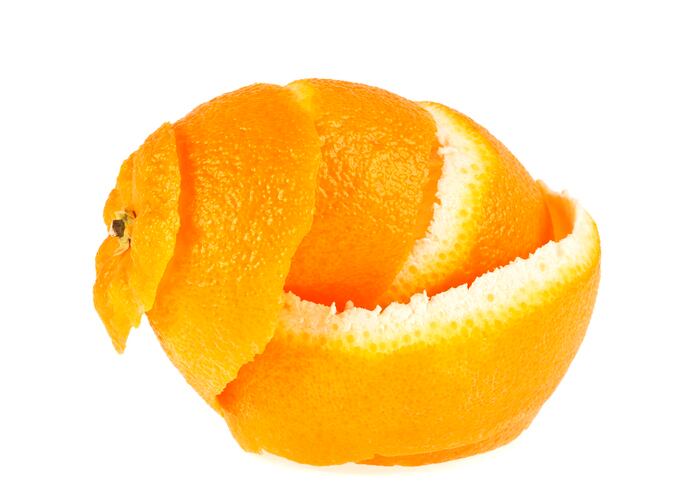What do you see happening in the development of upcycled ingredients for cosmetics right now?
When I started to look into upcycling three or four years ago, there was nothing, and now I see more and more coming up. I see a lot of companies developing websites about the upcycling story, and they connect a lot to clean beauty as well because there's not really a clear connection between upcycling and clean beauty.
The biggest connection is about repurposing, resourcing, and, of course, the environment is the bigger connection there because clean beauty wants to use ingredients, often green, and often safe.
Upcycling is really a way to repurpose waste and integrate it into greater levels, and in this way, you reduce the waste, and by reducing the waste, you reduce the impact on the environment.
I think that connects naturally with the green story and with a clean beauty story. There is more and more coming up in the cosmetic industry because consumers are looking for naturality, they're looking for environmentally friendly strategies, and that's why you see these supplies coming up and not just the suppliers, also finished product companies.
What are the pros and cons of developing these upcycle ingredients?
You see a lot of pros because when you do something good, that can only be good.
The biggest problem is it's a very lengthy process, especially if it's something from scratch. You need to find the people that are doing the job, you need to find the source of the waste that you identify, you need to find the bio-refinery that is treating the waste, you need to find the optimization process. It can be very not cost-effective at the beginning and a lengthy process. This is not the pro, the job that people need to do.
It's a different mentality because we also need to change the mentality of people doing business. I’ll give a classic example: orange juice. When you produce orange juice, you leave all of the peels, you only take the juice. So where do those peels go?
No one is really taking the time to say “I want to make an extract from orange and I'm going to take the peel, I'm not going to take the juice,” because if the juice is available, I’m going to take the juice. It's easier. Why do I need to go through the hassle of looking for the peels, who's going to give me the peels, and the conservation of the peels?
All of this waste, as you know, is not properly preserved. It’s going to start to ferment, it’s going to start to rot. There is also that aspect.
You need to have an integrated system, as they do for instance, in Northern Europe or in the Netherlands, where in fact, there is a hub. In that hub, there are different companies and they take one product and every company is using a piece of that product so there is only one supply chain.
Imagine that you get oranges coming into the hub, and there is an orange juice factory, there is an essential oils factory, there is a factory that maybe works on the fibers. All of them take a piece of that fruit and they use every part of it right there.
Right now you have cannibalization. Different industries take the same product and they compete for the same product. I think this (hub) mentality is not there yet, especially in this country, and I wish that there was also from an entrepreneurial and industrial and even a government point of view, a way to change this mentality with incentives to create these hubs, but they don’t.
This is the biggest problem. The biggest problem is to be able to use a material that has no value other than maybe be used for feedstock for animals, or in the best-case scenario for energy production. But by upcycling you can bring value back to the material and, again, you can reduce the environmental impact of that waste that otherwise would go to the landfill.
Do you think that American manufacturers and American companies are ready to use upcycled ingredients at scale? Or do you think that there's still some work that needs to be done to get there?
Again, the problem is the mentality. Unfortunately, the US has a very waste-oriented mentality. For example, composting means taking the peels, the veggies, the wasted fruit, putting it in a bucket and bringing it to a composting center. The latest statistics were saying that in the whole US, only 1% of American households do compost, 99% just throw it in their garbage.
That mentality on a large scale is also the mentality of the industry. Unless they see a clear advantage from an economical point of view, they're not going to do it. Unfortunately, the environment doesn’t lead to making money. It's something that people don't understand, they eventually will.
I see the problem is that very mindset that needs to change. Are there enough suppliers now producing enough ingredients? No, for the same reason, but there is so much value to doing that.
In theory, almost everything can be upcycled because everything in nature can be used for something, from coffee, tomato, orange, but also wood. You can derive oils, you can derive active ingredients, you can derive polymers, you can derive essential oils. Everything can be used, it's just that they need to scale it to the point that is cost-effective, and today we are not there. In the US, we're not there.
Have you seen any interesting upcycled ingredient innovations recently?
I personally developed a couple of ingredients that I thought were very cool. One comes from blueberry skin. When you do blueberry juice, you basically take blueberries and crush them. The juice goes in the glass and what is left is the skin and that kind of jelly thing that is around the seeds. You can take that skin and make a powder out of it and in development, it was very good in terms of sun protection, oxidant protection from UV light and protection from blue light.
There are these products on the market, they’re commercialized. Another example of an interesting product is tomato skin. When you make tomato juice what's left again is the skin, the flesh and the seeds. If you take the skin and those seats, you can make oil and that oil is super red and full of lycopene, and lycopene is one of the most potent antioxidants that you can imagine.
An example I liked from the NYSCC show was coming from a big contract manufacturer that makes lipsticks and makeup and they presented a product that was a lip fluid that contains an upcycled material from coffee chaff. When you roast the coffee bean you remove a little husk or chaff that is around the coffee bean.
I thought it was a very nice application, especially because when you think about coffee, you think about commodities, there's so much volume. You just have to recover the waste, process it and create products. The potential is unlimited.
In general, when you think about veggies or fruits, almost half of what is produced is wasted in the world. When that organic material is not recovered and repurposed, it can actually even be dangerous for the soil, for the environment, because it degrades into molecules that are very toxic at high concentrations.
So there is unlimited potential, and it is true that sometimes the part that we waste is greater in volume than the part that you eat. Artichokes are a good example. How much do you eat of an artichoke? just the very tiny inside, the part of the flower that is tender. Everything else is waste.
What do you see as some first steps that the industry can take to start making upcycled ingredients more viable in the US market?
What I would do is like what they’re doing in Florida with oranges. The University of Florida and different investigators that are working with the orange producers basically recuperate the peels and extract essential oils from them.
What I think is an important step is the transportation plan. If you work in Florida, focus on oranges, if you work in New York state, focus on Apples, if you work in Mexico focus on avocado.
I would suggest identifying what the biggest crop is near you, meaning the biggest waste source, because when you have more volume it’s going to be more cost-effective, and it's going to be easier to get.
The first step is to identify what the local production around you looks like, you look at the agriculture. Because, for the cosmetic industry, when we work with natural ingredients often greens ingredients are coming from the things that we also eat. Look at what is produced locally so the cost of transportation is limited. You have more factories, more plants working there on food, and then you can take what the food industry is not using and bring it to the cosmetic world. That will be the first step.
Then the second step would be to identify or create a bio-refinery that can do the process, although, often the process is similar to the process you do with extracting anything. Sometimes in order to extract a peel, it's harder than extracting something that is soft.
But I think this is irrelevant. In the Netherlands, and also in the US I think there is a company that is extracting hemicellulose from wood. It’s a very hard material but they need to have a particular technology to get the soft part out of the wood to remove the cellulose, to remove the lignin. They only take that softer part and they use that part to create products like polymers.
There are these two steps, identify the source, figure out your extraction procedure, and make it in a way that is scalable. It's not difficult, it's just the change in mentality.
What else is important for cosmetics professionals to know about upcycle ingredients right now?
They need to understand the efficacy. If I want to go in that direction, and it is a cost-effective direction, I want to make sure that first, it is reproducible, meaning that if I buy your upcycle ingredients, you need to give me something that is standardized and has the same content. The consistency of the product needs to be there, like any other ingredients.
Like any other ingredient, if you claim some sort of efficacy, you need to show it. It's the same process, you need to make sure that the upcycled ingredient we’re buying from you not only is consistent with the specification but also has the same safety and efficacy profile of something that is not upcycled.
That's actually very true also, in the food industry. When you go to the supermarket, and you want to buy a granola bar that is made with upcycled granola, you may spend a little bit more but the taste has to be there. You cannot say, “Oh, this is upcycled, but it doesn't taste good.” Nobody would want to buy it if the quality and what to expect are not there.
It’s The same with cosmetic ingredients, suppliers need to make sure that what they produce in an upcycling process is of equal quality, or even better quality, than non-recycled material. Some materials from waste actually are superior in terms of quality and efficacy compared to the original material.
Is there anything else that you want to add or anything important that we missed?
There are some organizations that, especially specializing in food, that try to give certifications and support. You can check the Upcycle Food Association.




